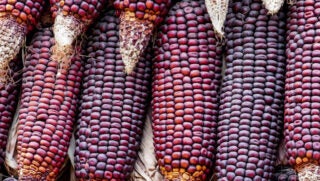This time of year brings challenges for many livestock farmers in the northern hemisphere thanks to the winter weather. People are bundled up in hats, coats, gloves, and even long johns, as well as insulated coveralls. Whether during winter chills of -25 degrees F — or during summer highs into the triple digits — animal welfare is a priority for farmers and ranchers.
How do farmers keep their animals comfortable in the cold? It depends on the species. Different animals have different needs.
Poultry and Swine
Broiler Chickens (which are raised for meat) are typically raised indoors, which reduces winter weather worries. Chickens are housed in modern temperature-controlled barns. It’s like Goldilocks and the Three Bears, except with computer systems that keep the temperature, feed, water, and ventilation just right. The conditions can be adjusted based on the needs of the birds in order to ensure their comfort and health.
These barns are also critical to preventing loss from predators and keeping diseases out of flocks.
Similar to chickens, turkeys are often raised in high-tech comfortable barns. The U.S. turkey capital is Minnesota, which has particularly brutal winters. Barns keep the birds warm and dry even when it’s 30 below and the wind is howling.
Pigs are usually raised indoors, similar to poultry, in comfortable modern barns. Their barns minimize the stresses of volatile weather conditions including extreme (it-hurts-to-breath-types-of) cold.
Piglets in particular need to be kept warm, so farmers use heat lamps. Once the piglets are older the temperature is tweaked to match the needs of the growing pigs. Unlike the outdoors, we can control the conditions inside to make it more comfortable, just like what you do with your own home.
Dairy and Beef Cattle
Taking care of cattle in the winter is a little bit different than taking care of pigs or poultry. Adult cattle are more tolerant to cold weather and can be housed either outside or in barns with doors and curtains that can be adjusted as needed. This doesn’t mean that animal care is any less of a priority. The needs of the animals are just a little bit different. Did you know adult cattle actually prefer cooler temperatures? The ideal range for adult dairy cattle is between 20 degrees and 65 degrees F.
Beef cattle, which have been selected for meat production traits, tend to be more tolerant to weather variations and are typically outdoors. Meanwhile, many dairy cows, which have been selected for their milk production, are housed indoors. The body types of beef cattle and dairy cattle are different — think of a St. Bernard versus a greyhound. See this article for more on the differences between the two.
For both types, plenty of energy dense feed, fresh water, and clean dry places to lay are key. Beef farmers and ranchers prepare for severe winter weather by feeding extra hay, since the grass can become buried under the snow. They also feed their cattle a diet higher in calories and make sure water tubs are free of ice, so that the animals have access to fresh water. Wind breaks and other forms of shelter are also used.
Many dairy cattle barns are designed with adjustable curtains to minimize drafts and keep in the body heat that the cows give off, which keeps the barns at a comfortable temperature for the cows. They also provide 24/7 access to high-quality feed and fresh water.
Calves, especially dairy calves, are more sensitive to the cold, so farmers give them extra attention and care. Newborn and young calves can become cold stressed even at temperatures above freezing. It’s critical that calves are kept clean, warm, and dry, that way they can focus on growing rather than just keeping warm.
Newborn calves are dried off quickly either in warming rooms, special calf warming boxes, or even in the farmer’s house! They are fed lots of warm nutritious milk, high-quality grain, and are provided with fresh water. Calves are bedded with lots of straw, which acts as an insulating blanket. Calf jackets are commonly worn by the youngest calves — and some farmers even put earmuffs on their calves!
Animal Welfare Comes First
No matter the species, farmers and ranchers put animal care first. It is our ethical obligation as the stewards of our animals. Our animals are a huge part of our lives and livelihoods. Furthermore, animal welfare and profitability go hand in hand. Happy, healthy animals grow better and produce more high-quality products, whether that be meat, milk, eggs, and more. It makes sense that farmers and ranchers take care of their animals, even when Mother Nature makes it challenging.
Michelle Miller, the Farm Babe, is a farmer, public speaker and writer who has worked for years with row crops, beef cattle, and sheep. She believes education is key in bridging the gap between farmers and consumers.



